Ailsa Craig
Geological Conservation Review site | GCR #2775 | Igneous Petrology | Tertiary Igneous
Geological Conservation Review site | GCR #2775 | Igneous Petrology | Tertiary Igneous
Scotland's geosites are chosen because of their local, national or international importance. Take only photos, leave only footprints: avoid causing any damage to this site. You can walk almost anywhere in Scotland without the need to ask permission or keep to paths, but you have a responsibility to care for your own safety, to respect people's privacy and peace of mind and to cause no damage.
This site is a Site of Special Scientific Interest (SSSI). It is an offence to intentionally or recklessly damage the protected natural features of a SSSI, and this includes unauthorised sample collection.
The right of access does not extend to quarries, building sites or any land where public access is prohibited, or to the collection of geological samples.
The island of Ailsa Craig, cut in rocks of a small granitic plug of Palaeogene ('Tertiary') age, forms an imposing feature in the approaches to the Firth of Clyde. Ailsa Craig is composed of alkali-microgranite containing the sodic mafic minerals arfvedsonite and aegirine. Geochemically the rock is peralkaline, and the site is important as rocks of this composition are relatively rare in the British Palaeogene Volcanic Province. Recent geochemical studies on Ailsa Craig have shown that the rocks carry a characteristic peralkaline signature with enrichments in light rare-earth elements, and also in zirconium and niobium. A marked negative europium anomaly indicates an origin through fractional crystallisation of alkali-feldspar. In contrast to similar rocks on Rockall, which show subaluminous character and an iron-enrichment trend, the Ailsa compositions are thoroughly peralkaline.
http://geoscenic.bgs.ac.uk/asset-bank/action/viewAsset?id=2…
Link to BGS aerial photograph of Ailsa Craig.
Ailsa Craig can be visited by boat from Girvan during the summer; 1 hour trip to the island and 1 hour ashore, plus a sail around the island before returning to Girvan harbour.
https://www.sciencedirect.com/science/article/abs/pii/S0016…
C.G. Smith & R.M.L. Wignall. 'The British Palaeogene Volcanic Province - Ailsa Craig Geological Conservation Review site'. Proc. Geol. Assoc. (2020).
A B S T R A C T:
The small peralkaline microgranite intrusion that forms the island of Ailsa Craig in the Firth of Clyde
represents the southernmost intrusion of the British Palaeogene Volcanic Province (BPVP) within
Scotland. The granitic rocks of Ailsa Craig, famous for their use in making curling stones, are thought to be
the result of fractionation from a mantle-derived basic magma with no crustal contamination. The rocks
of Ailsa Craig also contain the comparatively rare alkaline ferromagnesian minerals riebeckitic
arfvedsonite, hedenbergite-acmite and aenigmatite. These factors make the Ailsa Craig intrusion unique
in the BPVP. The distinctive ‘spotty’ appearance of the Ailsa Craig granites, which is invaluable as a tracer
in establishing Pleistocene glacial transport, results from the close association of ferromagnesian
minerals with drusy cavities. This suggests that, unlike the more common dark minerals, they formed late
in the cooling and crystallisation history of the magma.
There are no access notes yet.
There are no safety notes yet.
There are no site highlights yet.

Ailsa Craig from Bonney's Dyke (pegmatitic gabbro intruding serpentinised ultramafic rock), Ballantrae coast, Ayrshire.
Link to site for dyke near Girvan:
https://geosites.scottishgeologytrust.org/geosite/1338
Con Gillen
Aug. 7, 2023

Signpost at old jetty, which is in a precarious state.
Con Gillen
Sept. 7, 2021
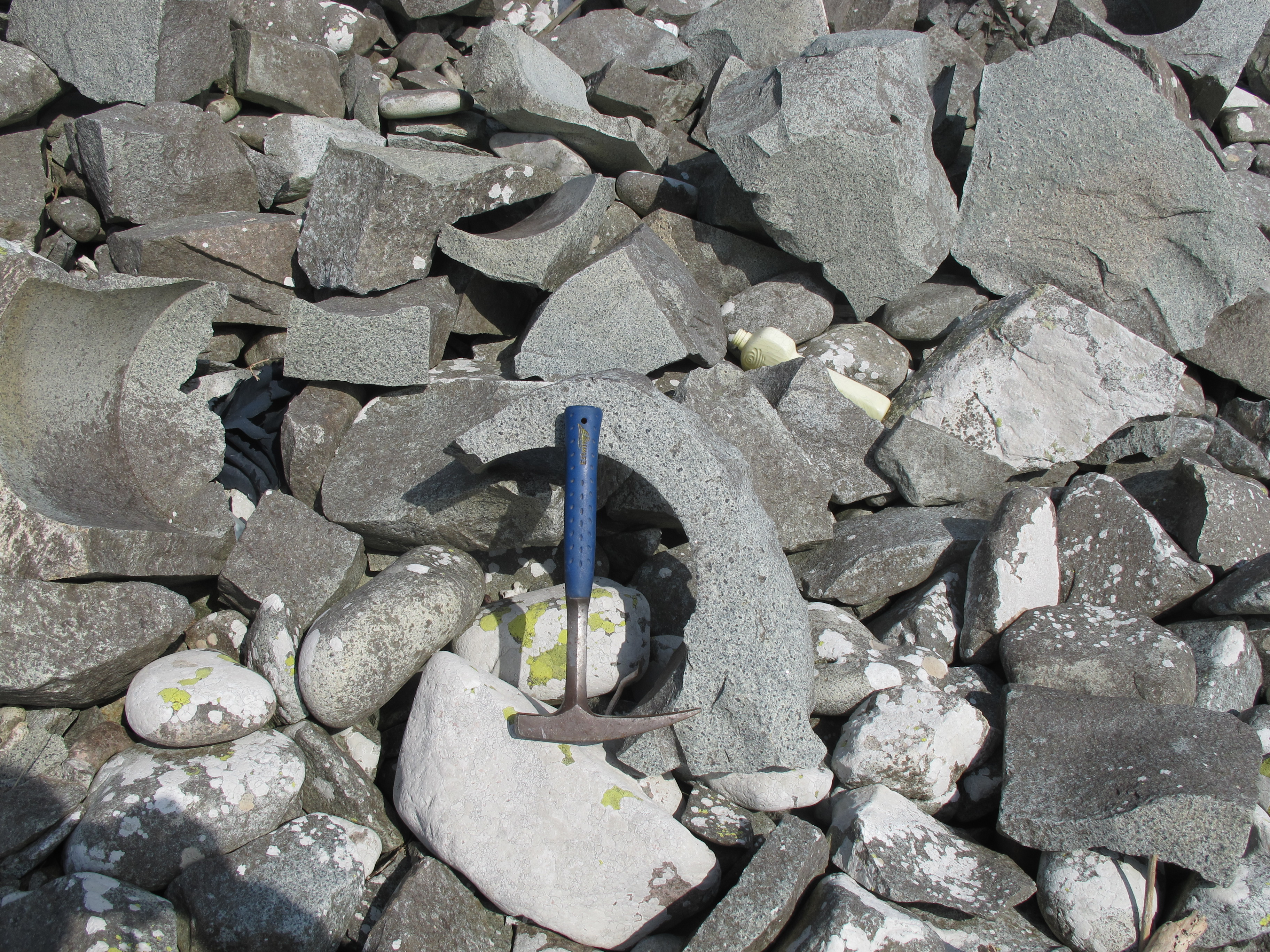
Waste material on quarry floor, showing blanks where 'ailsas' (curling stones) were cut out.
Con Gillen
Aug. 7, 2021
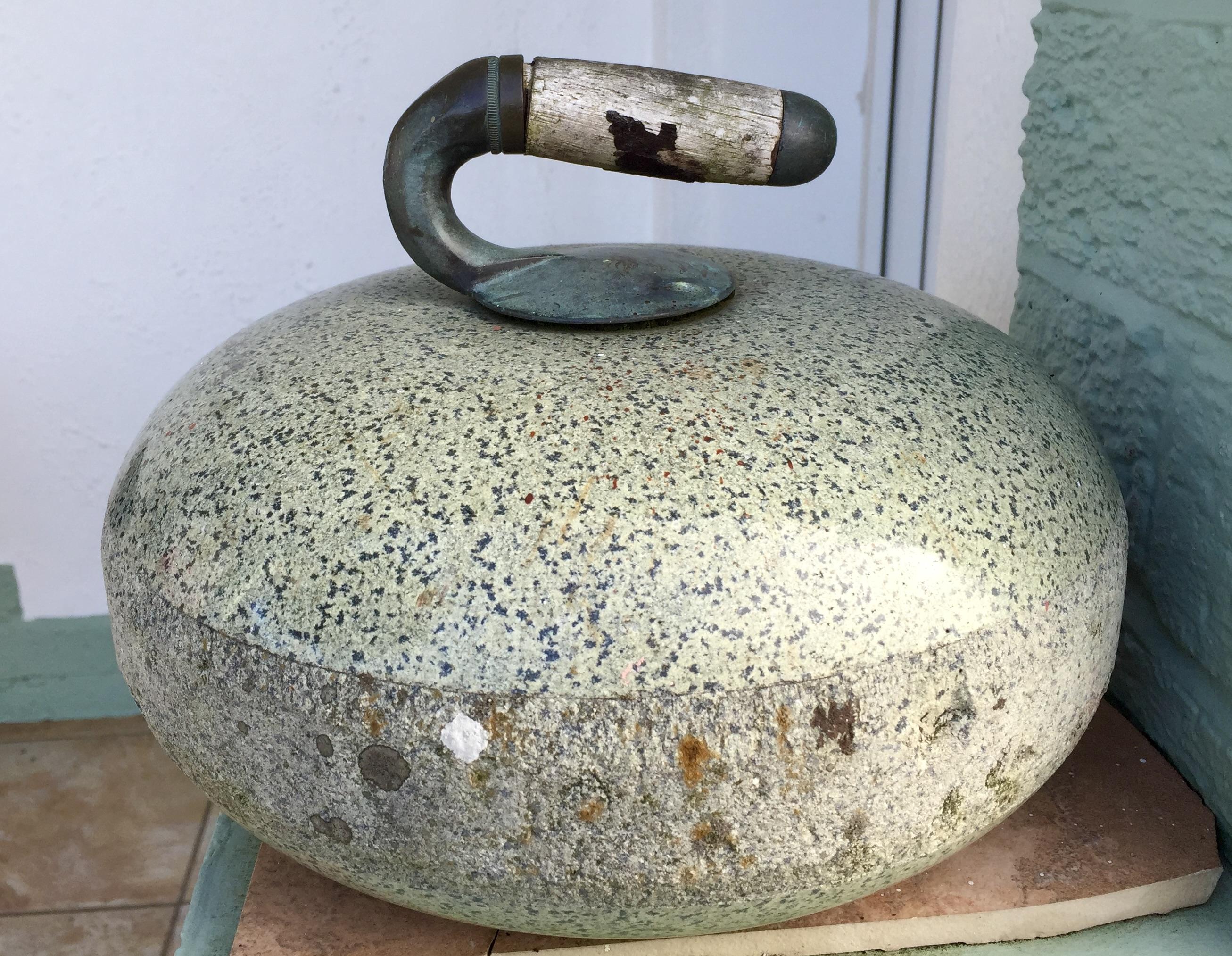
A well-used curling stone, found at Ballantrae. The polished top section shows the riebeckite crystals quite well.
Con Gillen
Aug. 24, 2023

Riebeckite crystals in granite.
Con Gillen
Sept. 7, 2021

Ailsa Craig lighthouse and talus on granite slopes.
Con Gillen
Sept. 7, 2021
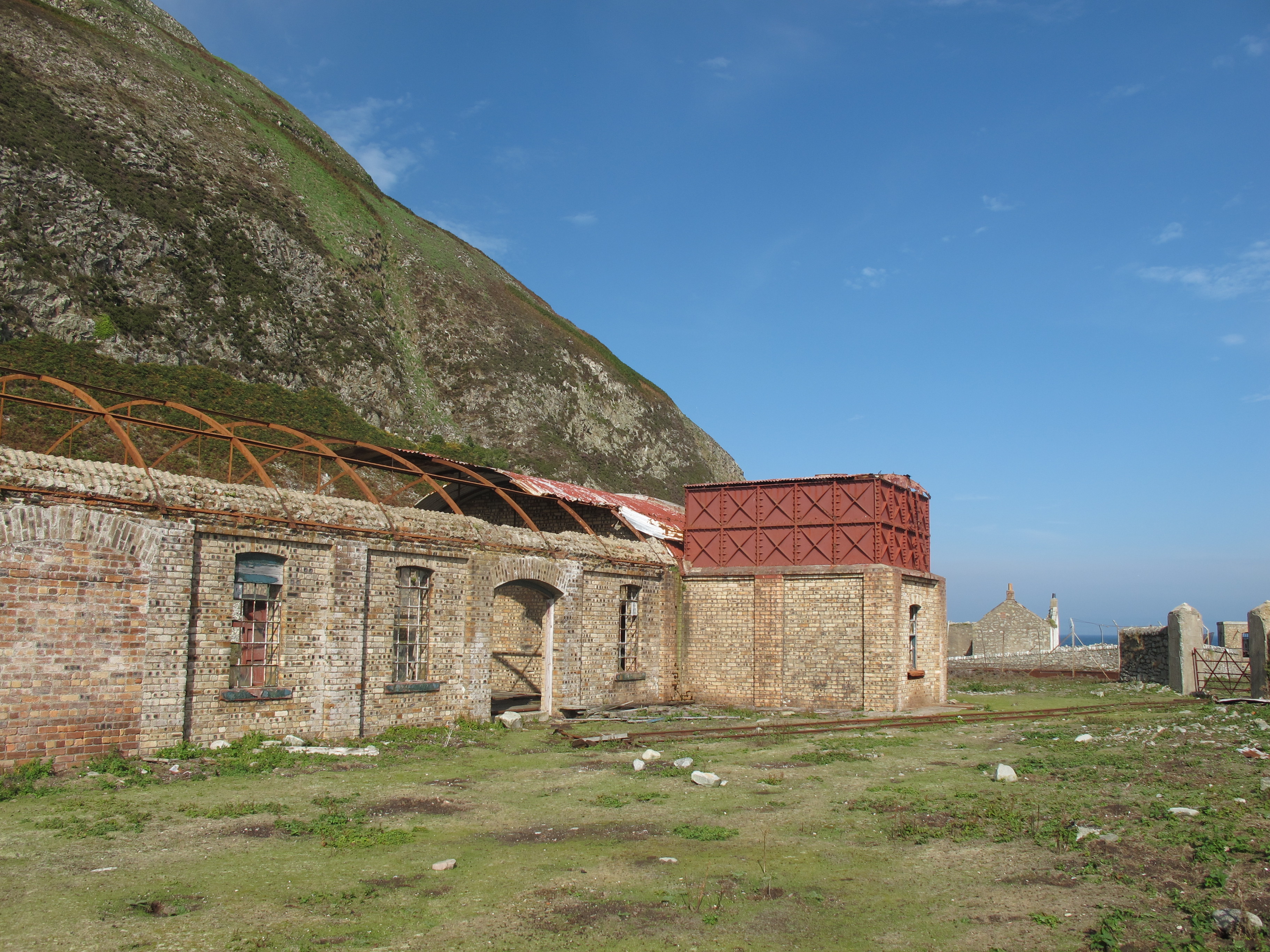
Old quarry workings at pier.
Con Gillen
Sept. 7, 2021

Joints in Ailsa Craig granite - these are tectonic in origin (three intersecting joint sets), not cooling joints; old quarry face.
Con Gillen
Sept. 7, 2021
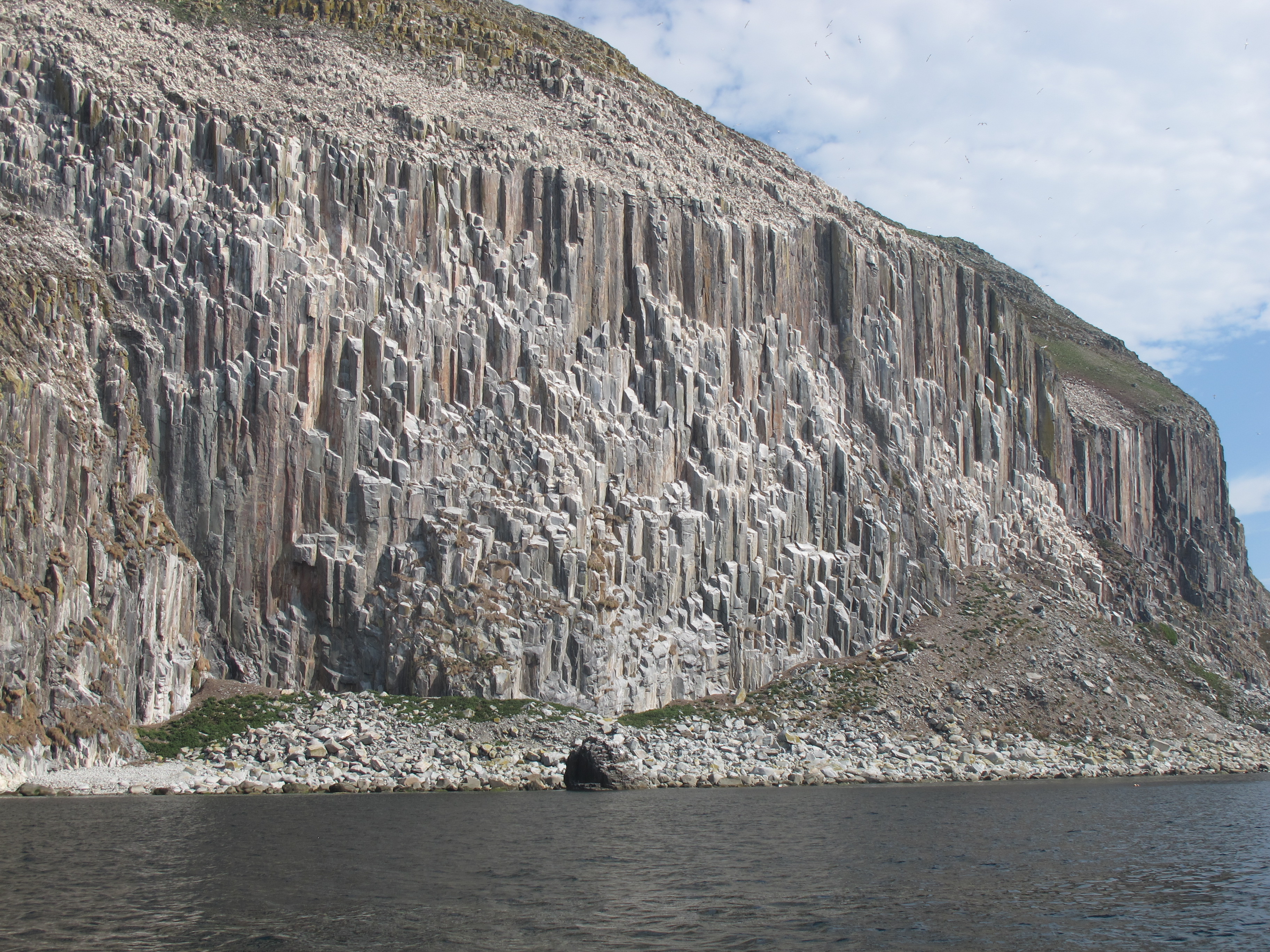
Closer view of vertical joints in granite face.
Con Gillen
Sept. 7, 2021
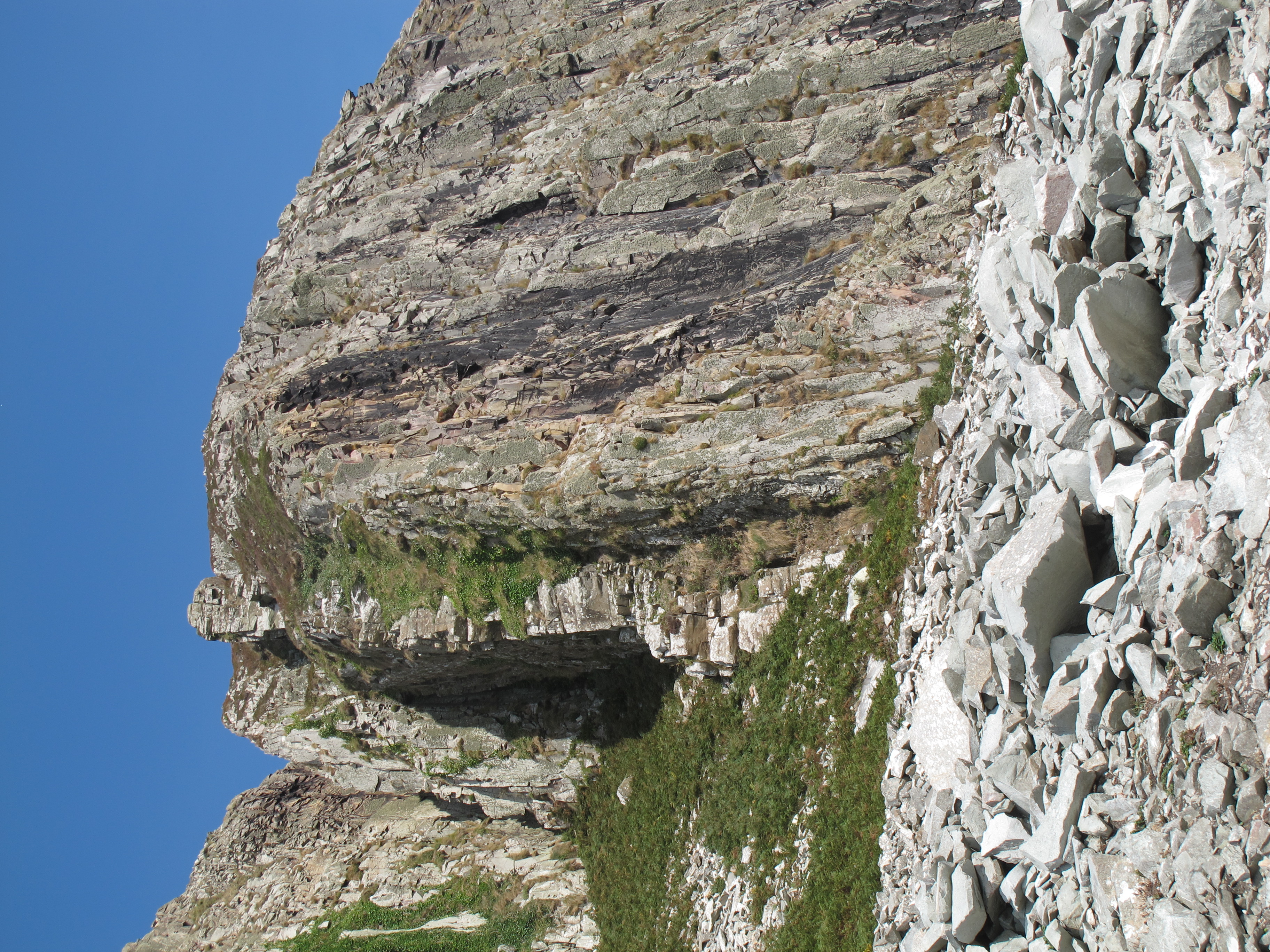
Dolerite dyke cutting riebeckite granite.
Con Gillen
Sept. 7, 2021